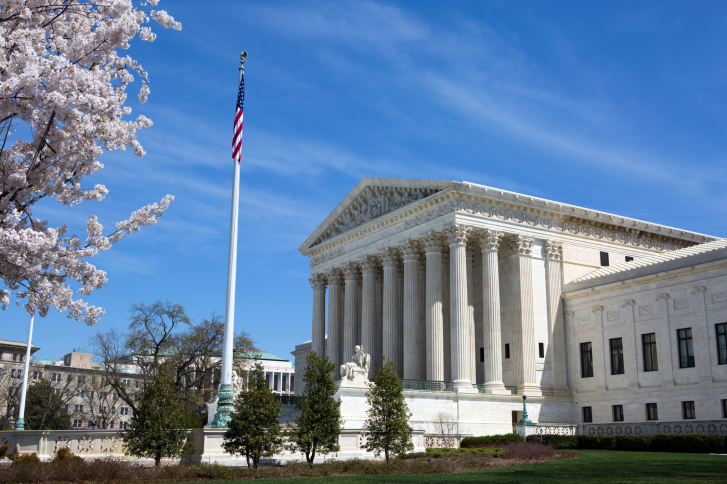Less than two years after Obamacare went into effect in October 2013, the proportion of uninsured individuals in the United States fell to less than 10 percent of the population during the first three months of 2015, the lowest level in 50 years, according to a survey by the Centers for Disease Control’s National Center for Health Statistics (NCHS).
The number of people who were uninsured declined from 36 million in 2014 to 29 million in the first three months of 2015, the survey reported. Among adults between the ages of 18 and 64, the percentage of uninsured dropped from 16.3 percent in 2014 to 13 percent in 2015’s first quarter.
The change is mainly due to the Obama administration’s expansion of Medicaid, not a rise in people obtaining high-quality insurance, says Naomi Lopez Bauman, director of health care policy for the Goldwater Institute.
“Even though they are technically insured, Medicaid patients routinely face barriers to access,” Bauman said. “Lawmakers in many expansion states have essentially handed out Medicaid cards without addressing the underlying issue of access to care. Medicaid reimbursements are notoriously low, and many doctors are no longer accepting new Medicaid patients.”
Independent health care analyst Greg Scandlen says around 10 million people are newly enrolled in Medicaid under the expansion authorized by Obamacare.
“That would seem to be a good thing, except Medicaid is lousy coverage,” Scandlen said. “Most doctors don’t accept Medicaid patients, because the government’s rate of payment is so low. So even though people may have an ‘insurance’ card in their wallet, they still don’t have better access to health care. As a result, hospitals are reporting substantial increases in the use of emergency rooms.”
The Hospital Corporation of America reported an increase of 8.7 percent in the use of emergency rooms in the second quarter of 2015 compared to the same period a year ago, Scandlen says.
Questions Relevance of Statistic
Devon Herrick, a senior fellow with the National Center for Policy Analysis, says the argument the U.S. uninsured rate is the lowest it’s ever been is a red herring.
“Back when the number of uninsured was nearly 50 million, 40 percent had household incomes greater than $50,000, and nearly one-third of the total likely already qualified for Medicaid but were unenrolled,” Herrick said.
“What’s more important is whether someone has better access to care than ever before,” said Herrick. “The uninsured rate is low now because about 10 million more people were thrown into Medicaid, but many of them have a tough time finding a doctor who will see them at the paltry rates Medicaid pays. Of those who’ve enrolled in exchange plans, the deductibles are quite high, and most are paying out of pocket for doctor visits because they will never meet their deductible.”
Casting further doubt on the survey’s relevance is that it was taken in early 2015, when people had yet to pay much in premiums or deductibles on their Obamacare insurance policies, Herrick says.
“Surveys aren’t always accurate, but more important is the fact that perhaps 17 percent of those with exchange coverage may drop out before the year is out,” Herrick said.
“A few people, such as early retirees, probably benefited, but many others have been hurt by coverage that is more expensive and included costly, government-mandated benefits they do not want,” Herrick said.
Impossible to Measure
Greg Scandlen says current statistics for the number of uninsured are inconsistent with past numbers.
“Ultimately, we will not be able to measure the impact of Obamacare on the uninsured because the Census Bureau decided to completely change its methodology for counting the uninsured starting in 2014,” Scandlen said.
“Its Current Population Survey has been the gold standard for measuring the uninsured since the 1980s, but since 2014, it is impossible to compare its numbers to anything that went before,” Scandlen said. “This means we are groping in the dark, and any statistics we see—other than actual nose counts from insurance companies—are meaningless.”
Disturbances caused by the initial Obamacare rollout have created further havoc with the statistics.
“In The New York Times, Robert Pear reported a large decrease in the number of uninsured since 2013, but he neglected to point out that there were big surges in the number of uninsured in 2012 and 2013, after Obamacare became law,” Scandlen said. “Several million people were forced to drop their coverage, and many others chose to drop coverage in anticipation of getting Obamacare in 2014, so a drop since 2013 is less impressive because the number of uninsured was artificially high in that year.”
Disempowering Doctors, Patients
Obamacare’s numerous government mandates are moving the entire health care system toward Medicaid-like care, says Twila Brase, president and cofounder of the Citizens’ Council for Health Freedom.
“The drive of Obamacare is toward patient care that is standardized, minimized, provided by non-physicians, and tracked and controlled by outsiders through the electronic health record system and so-called payment reform, which will eventually pay doctors only for quality and value as defined by health plans and the government,” Brase said. “Patients who pay cash and patients who are uninsured may end up receiving the best care because there are fewer outside controls.”
Kenneth Artz ([email protected]) is managing editor of Health Care News.
Internet Info
Robin A. Cohen and Michael E. Martinez, “Health Insurance Coverage: Early Release of Estimates From the National Health Interview Survey, January–March 2015,” National Center for Health Statistics, August 12, 2015: https://www.heartland.org/policy-documents/health-insurance-coverage-early-release-estimates-national-health-interview-survey-





